The Hero Section: Capturing Attention Immediately
The hero section is the first thing visitors see, so it must deliver your message instantly. You want to grab attention with a clear, concise headline that solves a problem, followed by a subheading that highlights the key benefit. For example, the corporate messaging platform, Slack nails this with “Slack is your digital HQ,” instantly positioning itself as the go-to workspace solution. The subheading explains how it transforms team collaboration, and includes a strong CTA, “Get Started – It’s Free”, which encourages immediate action. This combination of clarity and value makes it easy for visitors to engage right away.

Lead with Benefits, Not Features
When it comes to your landing page, focus on your products benefits rather than its features. Understand your audience’s pain points, what problems are they trying to solve? Then, frame your product as the solution. Speak their language—keeping it simple and relatable, and appeal to their emotions. Highlight both quick wins and long-term value, showing how your product can improve their lives immediately and over time. Users want to know how your product or service will solve their problems or enhance their lives, not just what you do on a technical level. For example, instead of listing products specs, saying “Save hours every week with our automated solution”, speaks louder on the benefits and resonates more deeply with users' pain points and needs.

Social Proof: Building Trust with Testimonials and Reviews
In a world full of choices, social proof can be a powerful motivator. Use real testimonials and case studies, complete with customer photos or logos of reputable brands, to enhance credibility. Don’t forget to position social proof strategically—near the middle of the page or right before a CTA—where it can have the most impact.

Visuals and Design: The Psychology Behind User-Friendly Layouts
A clean, user-friendly design is key to leading the eye naturally toward your CTA. Everything from your layout to color schemes and imagery plays a psychological role in how people engage with your page. Use high-quality visuals—like happy customers or product demos—that reinforce your message. And keep it simple. Too much text or clutter can overwhelm visitors. Focus on clarity and simplicity, a clean design with plenty of white space makes your landing page more inviting and easy to navigate—every element should guide the visitor smoothly toward conversion.
Calls to Action: How to Encourage the Final Step
Next to your headline, it is probably the single most important element on a landing page. Compelling CTAs use strong, action-based text that instructs exactly what you need users to do — “Get Started” or “Claim Your Free Trial”. Ensure that the CTA button appears eye-catching by using vibrant, contrasting shades. Place your CTAs in prime spots; above the fold (keep your primary CTA visible right away) mid content, and lastly at the end of the page. Your CTAs should seem like the next logical step for your visitors. For instance, you could provide a primary CTA of “Start My Free Trial”—backed by a secondary call to action (CTA) like “Learn More” — that leads the users on-the-fence towards converting.
Optimizing for Speed and Mobile Experience
Don't overlook the importance of speed and mobile optimization. Users expect fast load times so try to keep page load time under three seconds — every second matters! And test your page across different devices to make sure it looks great and also functions smoothly on all devices.
In brief, the process of creating a high-converting landing page requires a few factors: from potent headlines to social proofs, logic in design which allows easy user experiences along to powerful CTAs . These components should be working together to produce a convincing experience for those who visit.
Ready to optimize your landing page for conversions? Get in touch!






















.png)



.svg)




